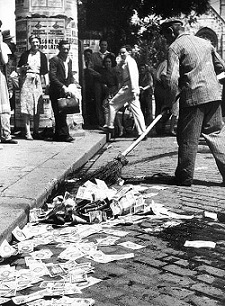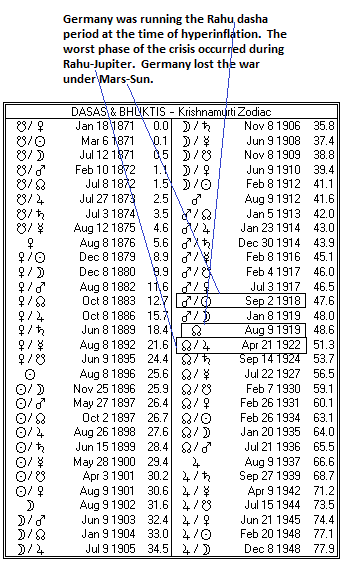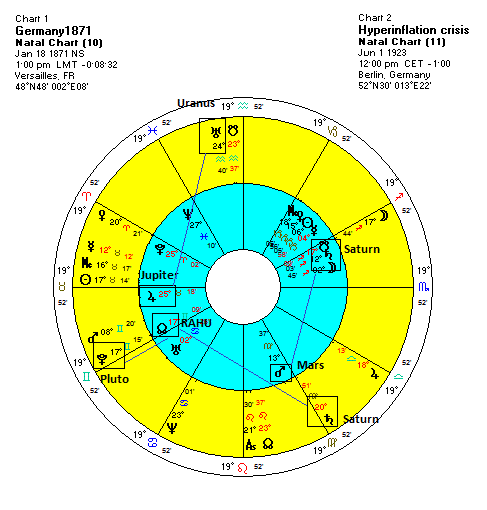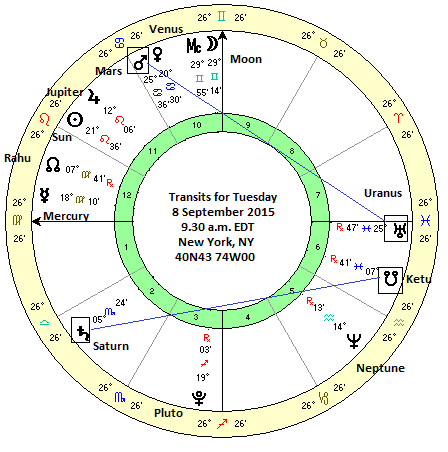 (6 September 2015)
One of the financial paradoxes in recent years is why there has been no
significant (official) inflation in most Western countries despite
massive efforts to print money by the Fed, the ECB and various other
central banks around the world. Many observers were wary of the Fed's
various QE programs to kickstart the economy after the 2008 meltdown
since they believed it would cause inflation to rise to dangerous
levels. Indeed, the Fed's unprecedented QE bond-buying program was one
the main reasons why gold rose to all time highs in 2011 as the
traditional inflation hedge came to within a stone's throw of $2000. As
more investors realized that inflation was as tame as ever (below 2%,
at least officially), gold prices began to fall back to earth. Now gold
trades close to $1100.
(6 September 2015)
One of the financial paradoxes in recent years is why there has been no
significant (official) inflation in most Western countries despite
massive efforts to print money by the Fed, the ECB and various other
central banks around the world. Many observers were wary of the Fed's
various QE programs to kickstart the economy after the 2008 meltdown
since they believed it would cause inflation to rise to dangerous
levels. Indeed, the Fed's unprecedented QE bond-buying program was one
the main reasons why gold rose to all time highs in 2011 as the
traditional inflation hedge came to within a stone's throw of $2000. As
more investors realized that inflation was as tame as ever (below 2%,
at least officially), gold prices began to fall back to earth. Now gold
trades close to $1100. There are many reasons why inflation never really got going in developed economies but perhaps the most important was that the economy was just so weak after the Great Recession, the expansion of the money supply was barely enough to even keep the economy afloat. Without it, we probably would have sunk into a much deeper depression like the 1930s. And we may still eventually have to face the longer term consequences of all this Fed printing -- whether in the form of a disruptive round of inflation or another recession after the current bubble bursts. Or both.
The debate over the post-meltdown recovery raises the question: is it possible to predict when periods of high inflation are more likely to occur? For the answer, let's take a quick look at perhaps the most famous incident of inflation in modern times, the German hyperinflation in the early 1920s. After its defeat in WW1, Weimar Germany suffered from massive debts, a depreciating currency and a dysfunctional economy. The demand for war reparations by the Allied powers then made a bad situation worse. Gradually, the increasingly hamstrung government began to print more and more money in order to pay its skyrocketing bills. At its worst in 1923, inflation was running at 41% per day as the currency became worthless and all savings were wiped out. By November, it took more than 4 trillion Marks to buy a single US Dollar. The pre-war exchange rate had been 4 Marks to the Dollar.
As it happens, there were some strong hints of this inflationary crisis in the 1871 horoscope of Germany. Germany's defeat in the war came during the Mars dasha period (of course!) and defeat was more predictable given the nasty Saturn square to Mars in the natal chart. But the post-war inflation occurred during the Rahu (North Node) dasha period. Rahu's major period began in 1919 just prices were beginning to rise sharply. Why Rahu? Vedic astrology holds that Rahu is acquisitive and insatiable. Through its grasping nature, it seeks to break norms and boundaries as it relentlessly pursues narrow material gain. This is a very apt description behind the inflationary impulse: prices begin an uncontrollable spiral as workers demand more wages to pay the ever-rising prices. Once the vicious cycle begins, it is difficult to stop.

What is amazing to note is that the Rahu in the Germany horoscope is in the 2nd house of money and wealth. Moreover, it sits just two degrees from the 2nd equal house cusp (19 Gemini) thus focusing its energy even more directly on the economic situation. Rahu isn't always bad, of course, but this Rahu is made more troublesome because of the opposition aspect from Saturn in the 8th house. The Saturn influence raised the likelihood that Rahu's more difficult side would manifest during its dasha period.
The height of the hyperinflation occurred in 1922 and 1923 during the Rahu-Jupiter dasha period. Since Jupiter symbolizes expansion and growth, we can understand how this combination of energies could have coincided with a damaging expansion of the money supply. To be sure, Jupiter is normally a benefic influence so one might think that its minor period could have brought more sustainable economic growth. That's true, but here the transits afflictions were highly concentrated. For its part, Jupiter was squared by unpredictable Uranus during 1923 at the height of the inflationary crisis. Hard aspects of Uranus to Jupiter suggest growth or gains that are out of control. Soft aspects (0, 60, 120) tend to be more constructive.

But the more significant affliction was to 2nd house Rahu. Transiting Pluto (19 Gemini) had been conjunct Rahu for several years in the early 1920. Pluto to Rahu transits can be very difficult and reflect times of intense and painful assertions of power and coercion, and in this case, this applies to the economy of the country (2nd house). Moreover, Saturn was transiting through the sign of Virgo from 1921 to 1923. Thus, Saturn casts its malefic 10th house square aspect to that same 2nd house Rahu. Saturn distorts and upsets most planets its aspects and tends to bring out more negative associations. Under good transits, Germany's 2nd house Rahu could have delivered strong economic growth. But with the double transit affliction from Pluto and Saturn made the economic crisis a more likely outcome.
The moral of the story is that Germany had the potential for the inflation crisis given its 2nd house Rahu. Both Rahu and Jupiter have symbolic connections to unrestrained growth. But it took the combination of the Rahu dasha period and several bad simultaneous transits for it to occur. In my next post, I will examine the US and other horoscopes to assess the risk of inflation in coming years. Many analysts still think a period of high inflation is possible, so it may only be a question of when. If and when inflation comes again, it will be better to own gold instead of a depreciating US currency.
Weekly Market Forecast
Stocks fell again last week as more investors pondered the implications of a possible Fed rate hike later this month. Friday's US jobs report was strong enough to keep this early hike scenario on the table. Of course, higher rates are anathema to most stock investors these days who have reaped the rewards of the zero interest policy for the past six years. The Dow lost 3% on the week closing at 16,102 while in Mumbai the Sensex tumbled 4% to 25,201.
I was correct in thinking we would likely see some early week downside on the Venus-Mars conjunction. While I thought we could see declines into Tuesday, I didn't expect the selling to be that strong. We did see some recovery in the middle of the week on the Mercury-Neptune alignment although gains were quickly lost in Friday's sell-off.
So it seems we are still very much in the grip of Saturn these days as it approaches its alignment with Ketu, the South Lunar Node. I would think we will likely see stocks struggle more in the coming days and weeks, even if there are some rallies along the way.
This week features a Mars-Uranus aspect on Tuesday which could be disruptive. Wednesday's Moon-Venus conjunction looks more forgiving but the Moon then conjoins Mars on Thursday and this could signal more difficulty. Friday's Moon-Jupiter-Neptune alignment could deliver a meaningful respite from the gloom.
